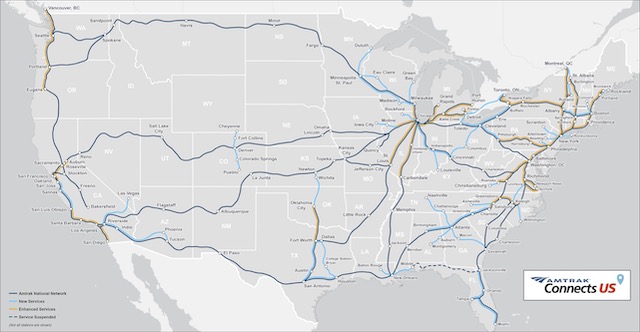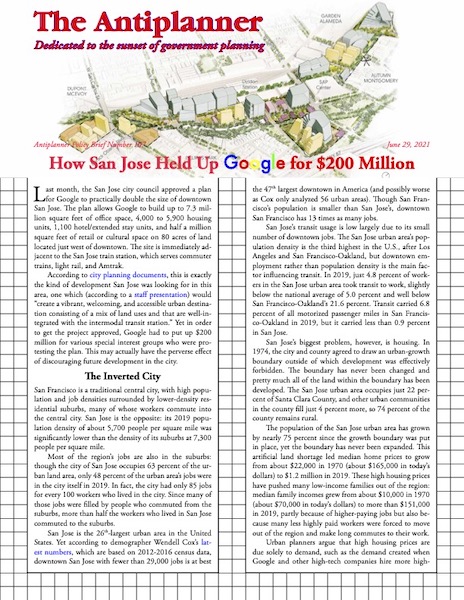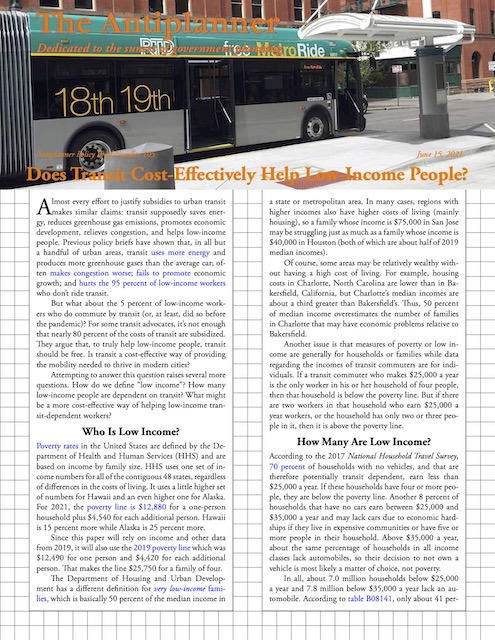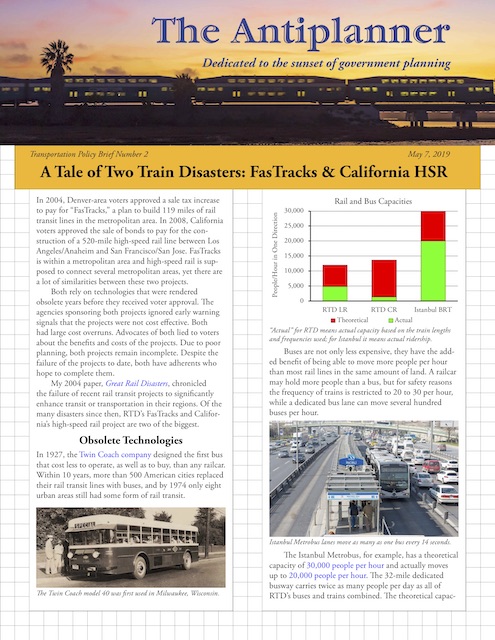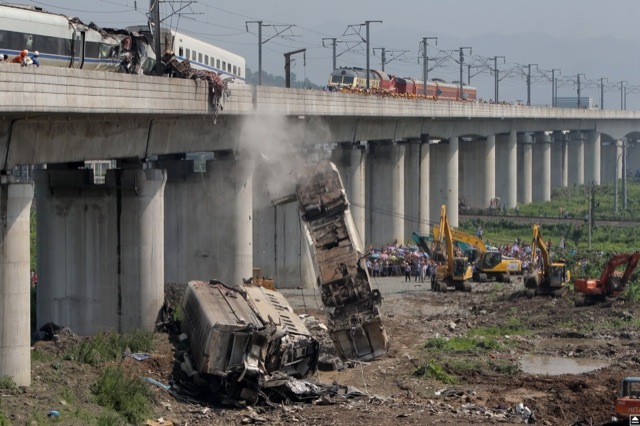In early 2016, the Transportation Research Board (TRB) published a 187-page report on interregional travel, which it defined as trips between 100 and 500 miles. To help publicize the report, the federally funded TRB placed a five-page summary in the May-June, 2016 TR News.
In response, rail advocate Vukan Vuchic, who is an emeritus professor of urban planning at the University of Pennsylvania, wrote a lengthy diatribe, published as a letter to the editor in the September-October 2018 TR News, complaining that the TRB report had a “negative tone” about high-speed rail. Vuchic’s case is weakened by the fact that he appears to have only read the five-page summary, not the entire 187-page report. Yet even that summary had plenty to say about high-speed rail, and much of it in the Antiplanner’s opinion was far too optimistic.
Vuchic charges that the report makes an “incorrect claim that HSR might only be feasible for the Boston-Washington.D.C., corridor.” In fact, neither the summary nor the full report made that claim, but the report did conclude, after many pages of lengthy analysis, that “In the United States, the NEC is unique in having many of the geographic, demographic, and demand conditions that European and Japanese experience suggests are favorable to public investments in intercity rail” and thus “presents far less uncertainty [than other corridors] with regard to the potential for passenger rail investments, including investments in high-speed service.” “Uncertainty” and “feasibility” are two completely different things.
Contrary to Vuchic’s heated letter, the Antiplanner would argue that the interregional transportation report spends far more pages on high-speed rail than makes sense for the United States. By the modern definition of high-speed rail — trains with top speeds faster than 150 mph — high-speed rail has zero market share in this country. Based on what we know about high-speed rail in other countries, it is fair to say that it will never be relevant here outside of the Boston-Washington corridor, and even there it is only “feasible” if we ignore capital and maintenance costs. Continue reading →

